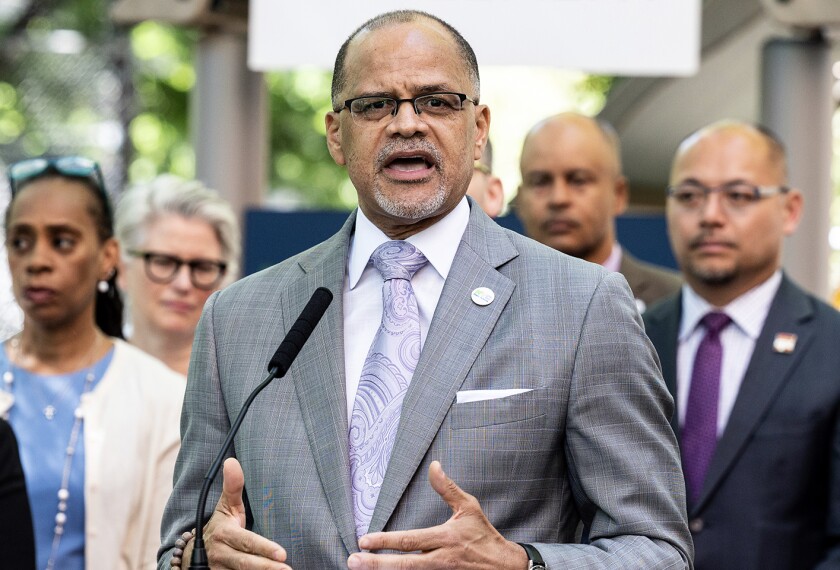Corrected: This story initially misstated which federal department administers the Emergency Connectivity Fund. It is the Federal Communications Commission.
From a village in Alaska and a large suburban district outside of Houston to a Catholic school in Maine, students are on the brink of getting cut off from high-speed internet and computers in their homes if the U.S. Congress doesn’t extend more federal funding to help them.
That’s according to a letter sent to congressional leaders from 65 groups representing private and public schools. The groups are asking lawmakers to add money to the Emergency Connectivity Fund, which was created by Congress during the pandemic so schools could provide students and teachers with home internet service and devices. (Through the program, libraries could also offer home internet and devices to their patrons.)
The Federal Communications Commission, which administers the program, has committed $7.1 billion to the program so far. But while it’s helped provide home internet and devices to more than 14 million students, it’s still not enough to meet demand. According to the letter, school districts and libraries asked for $2.8 billion in the final round of applications this past spring—more than double what remained in the fund.
The groups are asking Congress for an additional $1 billion for fiscal year 2023 to meet that demand, and chip away at the so-called homework gap between students whose families can afford home computers and high-speed internet, and those whose families cannot.
“Without additional funding, many of these requests will not be met, leaving millions of students disconnected at a time when learning loss and teacher shortages are leading concerns,” the letter says. “We cannot let this happen.”
This comes as more schools are winding down their efforts to supply students with home internet access. A recent survey from the National Center for Education Statistics found that only 45 percent of public schools say they are still offering home internet to students, down from 70 percent in September of 2021. That decline is likely driven by federal COVID-relief aid drying up.
Even though the vast majority of students are back to learning in-person, they still need access to high-speed internet and devices to do their homework, complete class assignments, interact with classmates virtually, and apply for college or jobs.
One upshot of the pandemic is that schools and teachers have incorporated more technology into their classrooms, even as students have returned to learning in-person. This has only increased pressure on students from low-income families to have reliable and fast home internet.
Among the letter’s 65 signatories are AASA, The School Superintendents Association; the American Federation of Teachers; the National Education Association; the National Catholic Association; The United States Conference of Catholic Bishops, Committee on Catholic Education; The National PTA; and the national associations for elementary and secondary school principals.
There is another federal program through which low-income families can get help paying for internet. The Affordable Connectivity Program does not use schools or libraries as intermediaries and gives eligible households that apply to it $30 vouchers toward their monthly internet bills. Several internet companies have pledged to offer $30 internet packages to eligible families essentially making internet free. But a recent Washington Post investigation found that telecom companies have hiked their prices, cut internet speeds, and engaged in other deceptive practices affecting people receiving federal money through the ACP and other COVID-era relief plans.
Additionally, many families are not even aware of the Affordable Connectivity Program—only a quarter have heard of it, according to one poll. Advocates for closing the homework gap say that although schools are not involved in administering the Affordable Connectivity Program, they should step in and educate families in their districts about the option, especially as other options for funding dry up.








